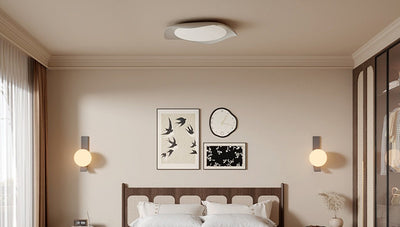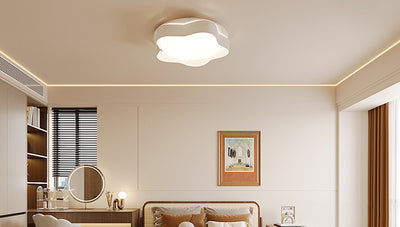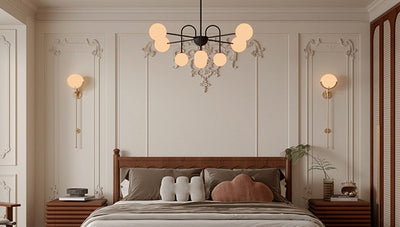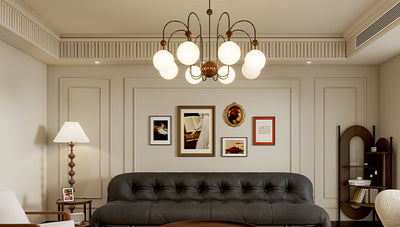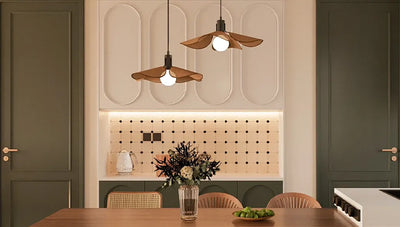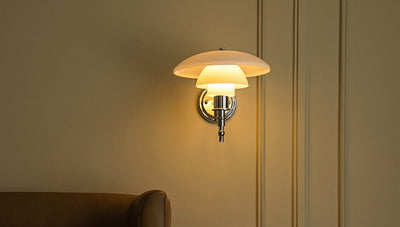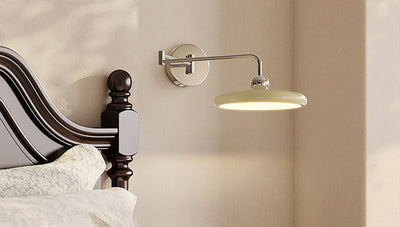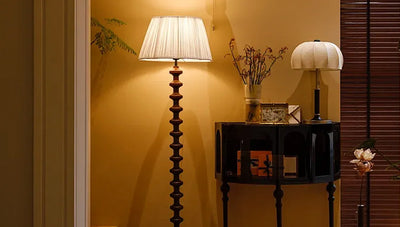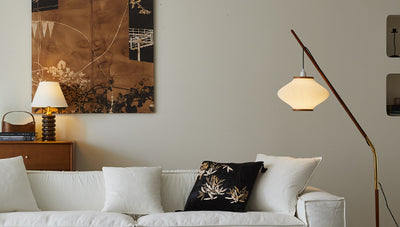Thinking about swapping out that outdated light fixture or finally putting a ceiling light in your dim den? You’re not alone — a ton of folks hit that same wall, wondering how to run wires or if they’ll fry something in the process. The good news? You don’t need to be an electrician to figure it out. This guide breaks down exactly how to install ceiling lights in a way that’s clear, doable, and stress-free.

"Installing a light fixture is one of the most beginner-friendly electrical upgrades," says Mike Holmes, contractor and TV host. And he's right — with the right tools and a few safety checks, most ceiling light jobs are easier than assembling IKEA furniture.
From picking the right fixture to wiring it up safely and handling situations with no overhead wiring at all, we’ve got your back. Let’s flip the switch on better lighting — minus the guesswork.
How Do I Safely Prepare for the Installation?
Installing ceiling lights safely starts with prep work—don't rush the basics. This cluster walks you through the must-do steps to avoid sparks, shocks, or a ruined weekend.
Turning Off Power at the Breaker
Before touching any home wiring, flip the right power switch on your electrical panel. It’s usually labeled—find the circuit breaker tied to your room.
- Double-check it’s the correct one by switching the light on and off.
- For full safety, flip the main breaker if you're unsure.
- Wear protective gear when opening the panel, especially gloves and safety glasses.
- A power outage is better than a trip to the ER.
Pro tip: Never trust that a light being “off” means it’s safe—cut the electricity.

Testing Wires with a Voltage Tester
You’ve shut off the breaker—cool. Now prove the power’s really off with a voltage tester.
- Choose a non-contact voltage tester for quick checks (no wire stripping needed).
- Hold it near the electrical wires coming from your ceiling box.
- If it beeps or flashes—stop. There’s still live voltage.
Hot wire, neutral wire, ground wire—test them all. Even if the power “should” be off, don’t gamble with a hot wire. Safety glasses and insulated gloves? Not optional.
⚡ “Electricity doesn’t care if it’s your first time—respect it every time,” says master electrician Trevor Lennox.
Tools Required for a Safe Setup
You don’t need a ton of tools—but the right ones? Non-negotiable. Here’s the go-to gear for a safe lighting install:
| Tool | Purpose | Must-Have for Safety? |
|---|---|---|
| Voltage Tester | Verifying wire is dead | ✅ Yes |
| Insulated Gloves | Shock protection | ✅ Yes |
| Wire Connectors | Secure, spark-free connections | ✅ Yes |
| Fish Tape | Guide wire through walls | ❌ Optional |
| Circuit Breaker Finder | Match breaker to room | ❌ Handy |
Also grab: a screwdriver, pliers, wire stripper, electrical tape, and cable staples if you're anchoring lines.
No cutting corners—your tools are your safety net.
Wiring a Ceiling Light: What’s the Process?
Wiring a ceiling light isn’t rocket science — but it’s not plug-and-play either. Here’s how to safely connect wires, use junction boxes, and properly secure your fixture.
1. Matching Wire Colors CorrectlyColor-coding in electrical wiring is no joke — get it wrong, and you could trip a breaker or fry a fixture.
- Black = hot wire (sometimes red)
- White = neutral wire
- Green or bare = ground wire
Use a wire stripper to clean wire ends and match colors precisely. Always wrap connections with electrical tape and double-check your setup before powering on. It's not just smart — it's safe.

2. Using a Junction Box Safely
The junction box is your wiring command center.
- Cut power at the circuit breaker
- Feed wires through a cable clamp into the junction box
- Join wires with wire nuts
- Ground securely using the green or bare copper wire
Pro tip: Always test with a voltage tester before touching anything. Secure the box with screws and close it up tight with electrical tape for extra safety.

“Treat the junction box like the heart of your circuit. Protect it well.” — Laura Thorne, Licensed Electrician, HomeTech Installations
3. Attaching Wires with Wire Nuts
This is where the magic (and safety) happens.
- Strip the wire ends (½ inch is ideal)
- Hold wires side-by-side — don’t cross them
- Twist on a wire nut clockwise until tight
- Give it a gentle tug — it should stay snug
- Wrap the nut base with electrical tape for added hold
If it spins too easy or falls off? Nope — redo it. Your connections need to be as tight as a drum.

4. Securing the Fixture to the Ceiling
Now for the final step: anchoring your light so it doesn’t come crashing down mid-dinner.
- Align the mounting bracket with the electrical box
- Feed fixture wires through the center hole
- Connect wires as described
- Use screws to secure the fixture to the bracket
- Ensure it’s level and firmly held in place
Stability isn’t optional — your fixture should feel like part of the ceiling itself.
Installing Without Overhead Wiring
Lighting a room without pre-installed overhead wiring is a challenge faced by many homeowners, particularly in older houses or rental units. Instead of cutting through ceilings or walls, modern solutions make this process far more approachable—no drywall dust, no complicated rewiring, and minimal need for permits.
We recently sat down with licensed electrician and lighting consultant Matthew Griggs of Griggs Home Electrical, who specializes in adaptive lighting for older properties. "Surface wiring has come a long way," he said, gesturing to a neatly mounted fixture in his studio. "Using conduits and modern cable covers, we can install beautiful overhead lights that look clean and professional—even in buildings that are a century old."
Griggs recommends starting with a surface-mounted electrical box and metal or PVC conduit to route the cable safely from a nearby power supply. The wire is housed inside the conduit, which can be painted to match the ceiling. “A proper connector and junction box keep everything secure and to code,” he explained. "And make sure your mounting hardware supports the fixture weight. That is a mistake people make far too often.”
✨ Pro tip from Griggs:
- Always use UL-listed components and double-check that the switch location is easily accessible.
- For renters, plug-in pendant fixtures offer a no-commitment solution—just hang, plug, and light up.
Safety remains the golden rule. As Griggs said, “If you are not sure about the wiring, call a professional. The cost of doing it wrong is far greater than the cost of doing it safely.”
🏆 Look for lighting kits that include safety certifications like ETL or UL. These ensure that the components meet recognized electrical standards—just one more reason to trust the setup and sleep a little easier.
Do I Need Existing Wiring to Install a Ceiling Light?
Before diving into ceiling light installation, it’s crucial to figure out whether your space is actually wired to support one. This cluster helps you check that fast.
Identifying Power Access Points
Before grabbing any tools, scout for nearby power sources. You’ll need a stable power outlet or electrical junction box to run your ceiling light.
- Use a voltage tester to see which wall socket or extension cord is live.
- Look for an electrical junction box near the ceiling — it may already be connected to your circuit breaker.
- No visible ceiling wiring? A plug adapter or power strip might help if you’re considering plug-in ceiling lights.
- Don’t ignore GFCI outlets if you're near kitchens or bathrooms — they matter for safety!
“Don’t start cutting drywall unless you’ve scoped out the power plan,” says Mike L., a licensed residential electrician.
Detecting Wall Switch Compatibility
Got a switch on the wall? Sweet — but not all switches play nice with ceiling lights. Let’s find out what kind you’ve got.
- Check the switch type — is it a single-pole switch or a three-way switch? (Hint: three-way = multiple switch locations).
- Unscrew the switch plate and peek at the wiring. Use a voltage tester to verify live wires.
- Smart switch? Dimmer? Push-button? Each of these comes with its own wiring quirks.
- If it’s a toggle switch but there's no ceiling light wired to it — you may need to rewire or add a smart relay.
Honestly, if your switch looks older than your grandma’s vinyls, it’s probably time for a wiring check or upgrade.
Where Should I Place My Ceiling Light?
“When a ceiling light is placed wrong, the whole room feels...off,” explains Michelle Tran, an interior lighting consultant with over 12 years of field experience. She has walked into countless homes where the fixture hung in the “center” yet failed to center anything at all.
Placing a ceiling light is not about symmetry. It is about synergy—between space, use, and visual comfort.
-
👉 Start with the room shape and ceiling height.
A square room with an 8-foot ceiling? A flush mount in the geometric center might work. For rooms with sloped ceilings or vaulted angles, placement often shifts with line of sight rather than blueprint measurements.
-
👉 Consider furniture layout and task zones.
In a bedroom, avoid placing a pendant directly above the bed’s head. In kitchens, lights belong above islands or prep counters—not just the center. In dining rooms, the fixture should align with the table, even if it feels off-center to the room.
-
👉 Follow the flow of natural light sources.
“If windows dominate one side, the artificial light should fill the void, not compete with daylight,” Michelle advises.
-
👉 For living rooms and hallways:
Lights often float above seating clusters or traffic flow zones—not door thresholds. In bathrooms, center fixtures above the vanity or mirror—not the tub.
The Lighting Research Center recommends evaluating shadows from multiple angles before finalizing placement. ✍️ Homeowners on Houzz often note how a misaligned light makes spaces feel “awkwardly staged,” especially when task areas go dark.
⚠️ Pro Tip: Align lighting with use, not just architecture. Visual harmony always starts with function.
Swapping out or adding a ceiling light isn’t just for the pros—it’s a DIY project that feels like leveling up your home. A few tools, some prep, and a bit of patience? You’ve got this.
Think of it like hanging a heavy picture frame, only with wires. Shut off the juice, test the lines, and follow the steps.“Electricity is unforgiving,” as one old-school contractor once said. Respect the wires, and they’ll respect you.
Got no overhead wiring? No sweat. Plug-ins, battery-powered LEDs, or even smart lights can still make your space shine.
FAQs for “How to Install Ceiling Lights?”
To install a ceiling light safely, you’ll want to have these essentials on hand:
- Voltage tester (to ensure power is off)
- Screwdriver (usually Phillips)
- Wire stripper or cutter
- Electrical tape
- Ladder or step stool
- Wire nuts
These make the process smoother and much safer—especially if you're new to electrical work.
Here’s a quick way to check:
- Use a voltage tester or multimeter.
- Touch one probe to the hot wire (usually black).
- Touch the other probe to the metal box.
- If you get a voltage reading, your box is grounded.
If there’s no reading, grounding may be missing—and that’s something to fix before proceeding.
Yes, as long as you follow basic safety steps:
- Always shut off the power at the breaker.
- Confirm with a voltage tester.
- Use tools with insulated handles.
- Don’t rush—go slow and follow instructions.
When in doubt, it’s okay to call an electrician for backup or to check your work.
The process is simpler than it looks:
- Match black (hot) to black, white (neutral) to white.
- Twist the ends together clockwise.
- Cap each pair with a wire nut.
- Tug gently to ensure the connection is secure.
- Wrap with electrical tape if needed for extra safety.
This could mean:
- Loose wire connections
- Incompatible or faulty light bulbs
- Voltage fluctuations in the circuit
- A worn or faulty wall switch
Try tightening connections or replacing the bulb. If it persists, it may be time to consult a licensed electrician.
Not really! If you’re comfortable wiring a regular light, you can handle a smart fixture too. Just follow the same wiring steps—most even come with user-friendly setup guides or app support. The trickiest part is connecting them to Wi-Fi, but once synced, you’ll love the convenience.

